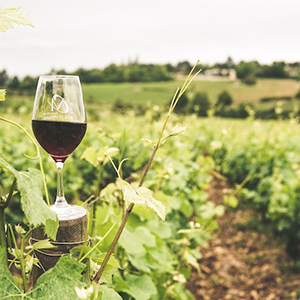Analysis of the main physical and chemical characteristics of the vine shoots of three vine varieties from Veneto (Italy)

Published: 15 September 2022
Abstract Views: 1209
PDF: 409
Publisher's note
All claims expressed in this article are solely those of the authors and do not necessarily represent those of their affiliated organizations, or those of the publisher, the editors and the reviewers. Any product that may be evaluated in this article or claim that may be made by its manufacturer is not guaranteed or endorsed by the publisher.
All claims expressed in this article are solely those of the authors and do not necessarily represent those of their affiliated organizations, or those of the publisher, the editors and the reviewers. Any product that may be evaluated in this article or claim that may be made by its manufacturer is not guaranteed or endorsed by the publisher.
Similar Articles
- Simona Rainis, Franco Sulli, Sirio Rossano Secondo Cividino, Eliana Cossio, The impact on the landscape, environment and society of new productive chains in a mountain area: strategies, analysis and future perspectives , Journal of Agricultural Engineering: Vol. 43 No. 1 (2012)
- Giovanni Molari, Michele Mattetti, Matthew Walker, Field performance of an agricultural tractor fitted with rubber tracks on a low trafficable soil , Journal of Agricultural Engineering: Vol. 46 No. 4 (2015)
- Simone Pascuzzi, Emanuele Cerruto, An innovative pneumatic electrostatic sprayer useful for tendone vineyards , Journal of Agricultural Engineering: Vol. 46 No. 3 (2015)
- Abderrahman Sghaier, Hanen Dhaou, Lassaad Jarray , Zouhair Abaab, Ahmed Sekrafi, Mohamed Ouessar , Assessment of drought stress in arid olive groves using HidroMORE model , Journal of Agricultural Engineering: Vol. 53 No. 1 (2022)
- Antonio Pantaleo, Maria Teresa Carone, Achillle Pellerano, OLIVE RESIDUES TO ENERGY CHAINS IN THE APULIA REGION PART I: BIOMASS POTENTIALS AND COSTS , Journal of Agricultural Engineering: Vol. 40 No. 1 (2009)
- Pasquale Dal Sasso, Giuseppe Ruggiero, Maria Antonella Ottolino, Giuseppe Verdiani, The role of agroforestry areas of the province of Bari in the absortion of carbon dioxide , Journal of Agricultural Engineering: Vol. 43 No. 1 (2012)
- Artur Altunyan, Arshaluys Tarverdyan, Geometric and kinematic parameters of vibrating knife in the development of cutting machines , Journal of Agricultural Engineering: Vol. 52 No. 3 (2021)
- Andrey Linenko, Bulat Khalilov, Timur Kamalov, Marat Tuktarov, Damir Syrtlanov, Effective technical ways to improve the vibro-centrifugal separator electric drive for grain cleaning , Journal of Agricultural Engineering: Vol. 52 No. 2 (2021)
- Caiqi Liao, Jin Chen, Fanzhao Geng, Xueming Tang, Airflow basin structure numerical optimisation analysis and suction nozzle characteristics experimental study of vacuum-vibration tray precision seeder , Journal of Agricultural Engineering: Vol. 53 No. 4 (2022)
- Fan Cui, Guoqi Dong, Baiping Chen, Penglin Yong, Suping Peng, Application of ground penetrating radar technology in moisture content detection of stored grain , Journal of Agricultural Engineering: Vol. 54 No. 1 (2023)
<< < 14 15 16 17 18 19 20 21 22 23 > >>
You may also start an advanced similarity search for this article.

 https://doi.org/10.4081/jae.2022.1396
https://doi.org/10.4081/jae.2022.1396







